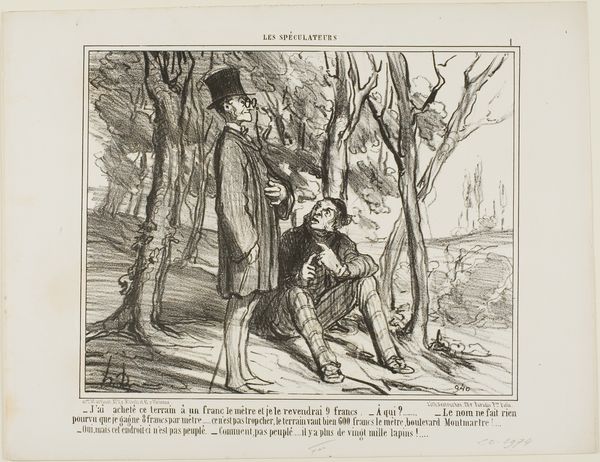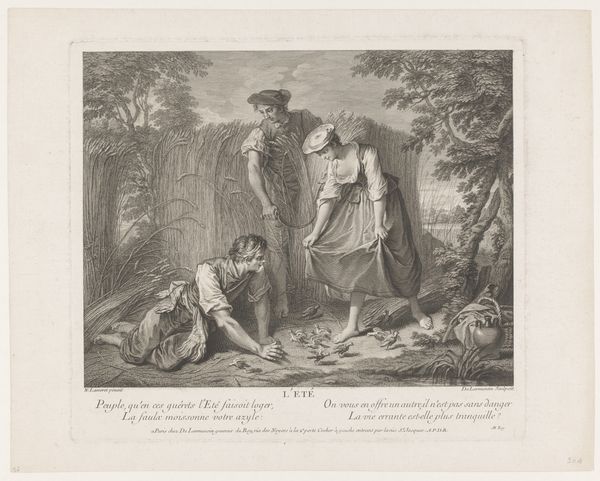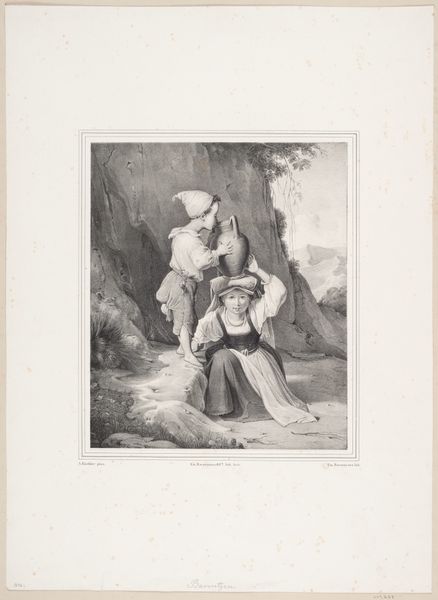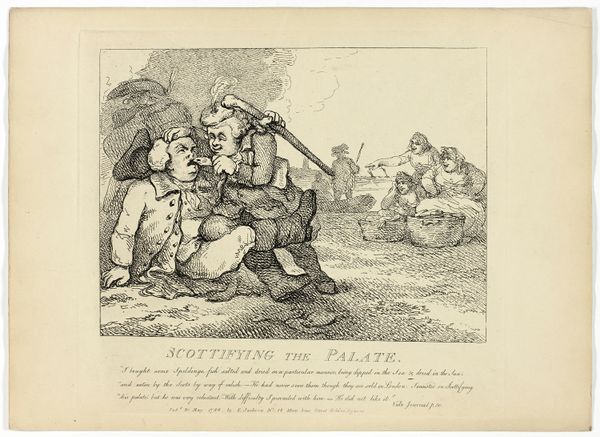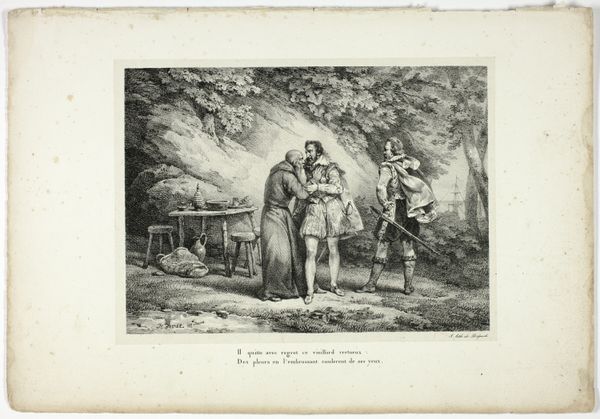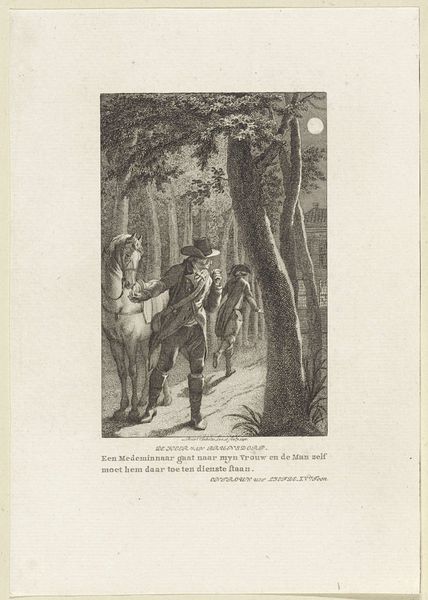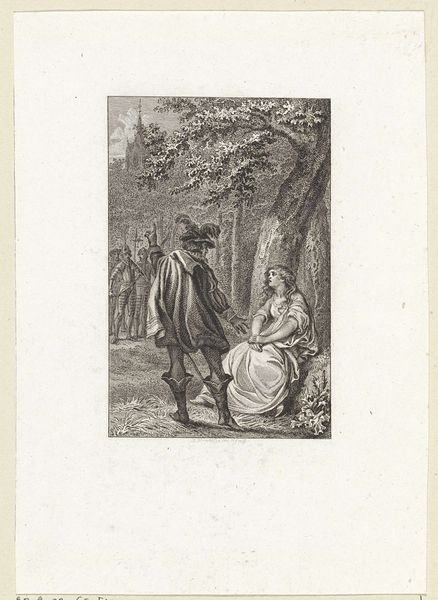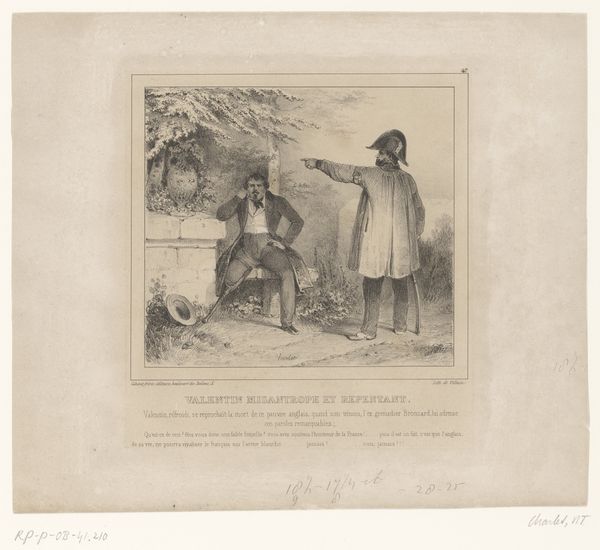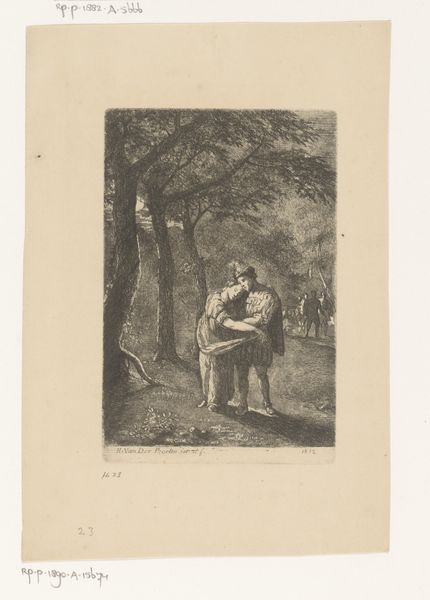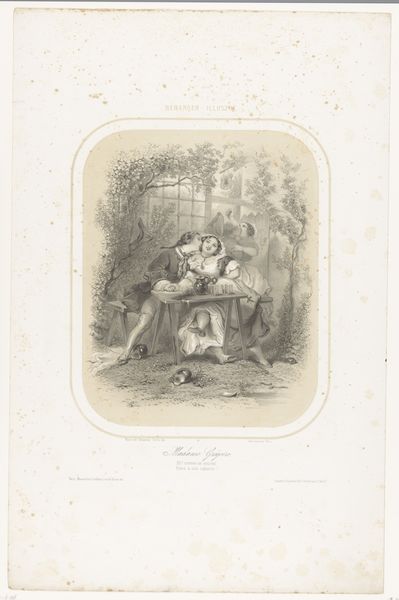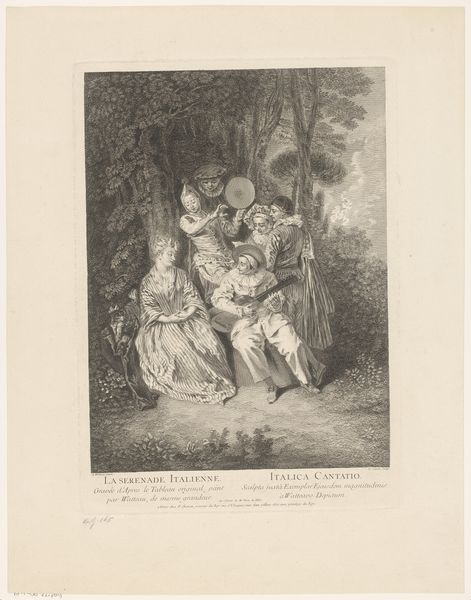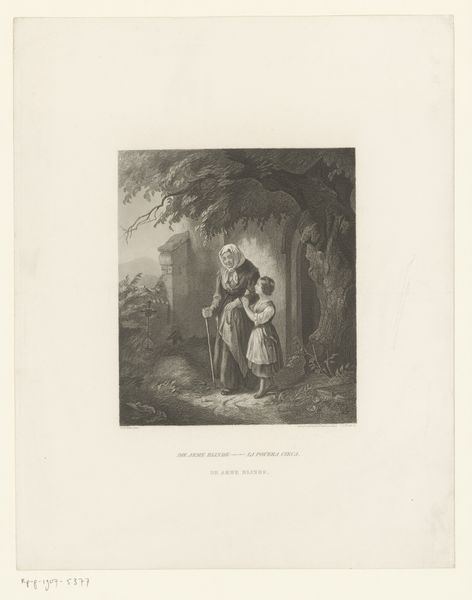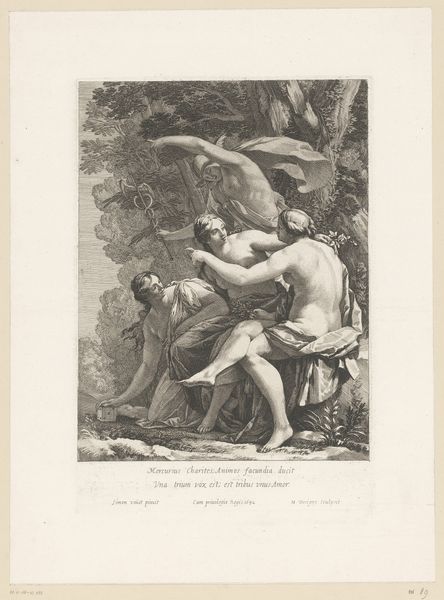
The Vision, from Boswell's Tour of the Hebrides 1786
0:00
0:00
Dimensions: 275 × 380 mm (sheet)
Copyright: Public Domain
This print, made by Thomas Rowlandson in 1786, is an etching – a relatively quick and repeatable process. A metal plate is coated with wax, the image is scratched into the wax, and then acid bites into the exposed metal, leaving an impression that can be inked and printed. Look closely at the figure’s exaggerated expression, and the cross-hatched lines that give form to the strange apparition with a hatchet for a head. The relatively cheap process of etching allowed Rowlandson to produce images like this in quantity, which suited the satirical purpose of his work. He wasn’t after the preciousness of a unique painting, but rather wanted to disseminate his commentary widely. Prints like this were part of a booming market for visual satire in the late 18th century, fueled by new printmaking technologies and a growing middle class eager for accessible entertainment. The Vision, then, is not just an image, but a product of its time, reflecting the increasing commercialization of art and the power of images to shape public opinion. This etching reveals how the printmaking process could amplify artistic voices and engage with the social issues of the day.
Comments
No comments
Be the first to comment and join the conversation on the ultimate creative platform.
